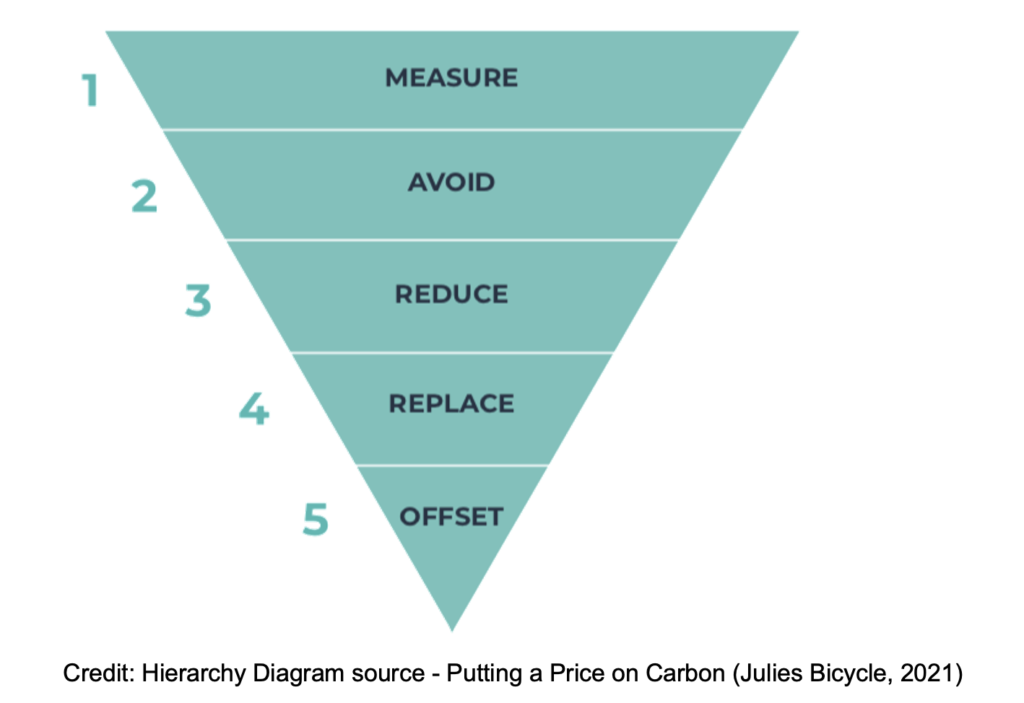In November 2018, the Intergovernmental Panel on Climate Change (IPCC) released a landmark report stating that ‘we have until 2030 to avoid climate catastrophe’[1]. To do this we need to reduce our green house gas emissions (GHGs) to zero. That means taking action now to reduce emissions year on year.
But what does net zero actually mean? The term net zero means achieving a balance between the carbon emitted into the atmosphere, and the carbon removed from it. This balance – or net zero – will happen when the amount of carbon we add to the atmosphere is no more than the amount removed.
83% of festivalgoers expect the festivals they attend to tackle their environmental impacts
What emissions we are responsible for?
There are some emissions that are directly under festival organisers’ control – for example, waste management, energy use, staff travel – while others, such as audience travel or supply chain impacts, are outside organisers’ direct control but can be influenced through incentives, contracts and procurement choices.
Carbon is approached in terms of ‘scopes’. A business is generally responsible for scope 1 and 2 emissions, and can influence scope 3.

What is a typical festival carbon footprint?
The current benchmark for greenhouse gas emissions per audience day (per person per day on site) at UK festivals with camping is 1.9 kg CO2e[3]. Energy typically makes up 77% of a festival’s on-site footprint, and waste 23%. This does not include audience travel, artist and contractor travel and food, significant impacts.
Based on research published in the Show Must Go On Report (2020), between 2015 and 2020 the sector achieved a 23% reduction in remissions per audience day from energy, waste, and water, mainly driven by diverting waste from landfill. However, in the period 2015-2020, total music festival carbon emissions on-site have risen, driven by a nearly 50% increase in audience numbers.
Carbon Balancing
Carbon balancing is a way of funding climate solutions that remove or prevent Green House Gases from entering the atmosphere (e.g. providing renewable energy to reduce fossil fuel demand or protecting forest to maintain carbon absorption). Whilst balancing alone should not be a first priority, or the single answer, it is a valuable tool enabling businesses to take responsibility for unavoidable emissions on a journey to net zero.
Creating your Net Zero Strategy
Every company needs a Net Zero Strategy. In Julies Bicycle’s recent report, Putting a Price on Carbon, they provided a useful hierarchy for tackling emissions. My advice is simply to follow the hierarchy i.e. measure your emissions, and then create a three-year action reductions plan. Focus on the key areas where there are gains, such as travel, energy onsite and waste.

There is a range of useful resources that can help on the Vision:2025 online knowledge hub, including a new Net Zero Briefing for Event Organisers.
[1] https://www.ipcc.ch/sr15/
[2] Festival audience attitudes to sustainability. CGA (2019). https://www.cga.co.uk/report-tag/consumer-research/
[3] Show Must Go On Report (2020)
























